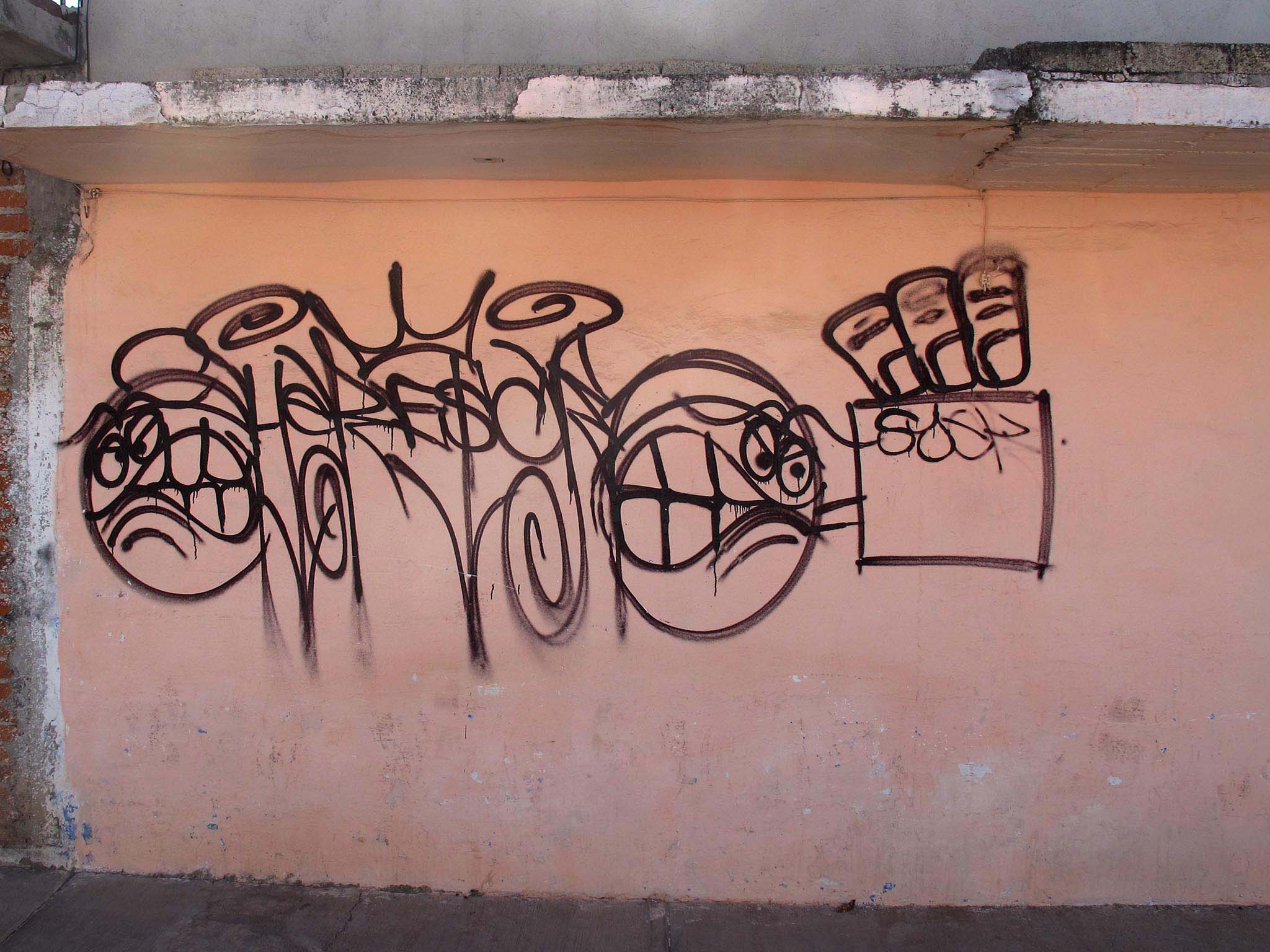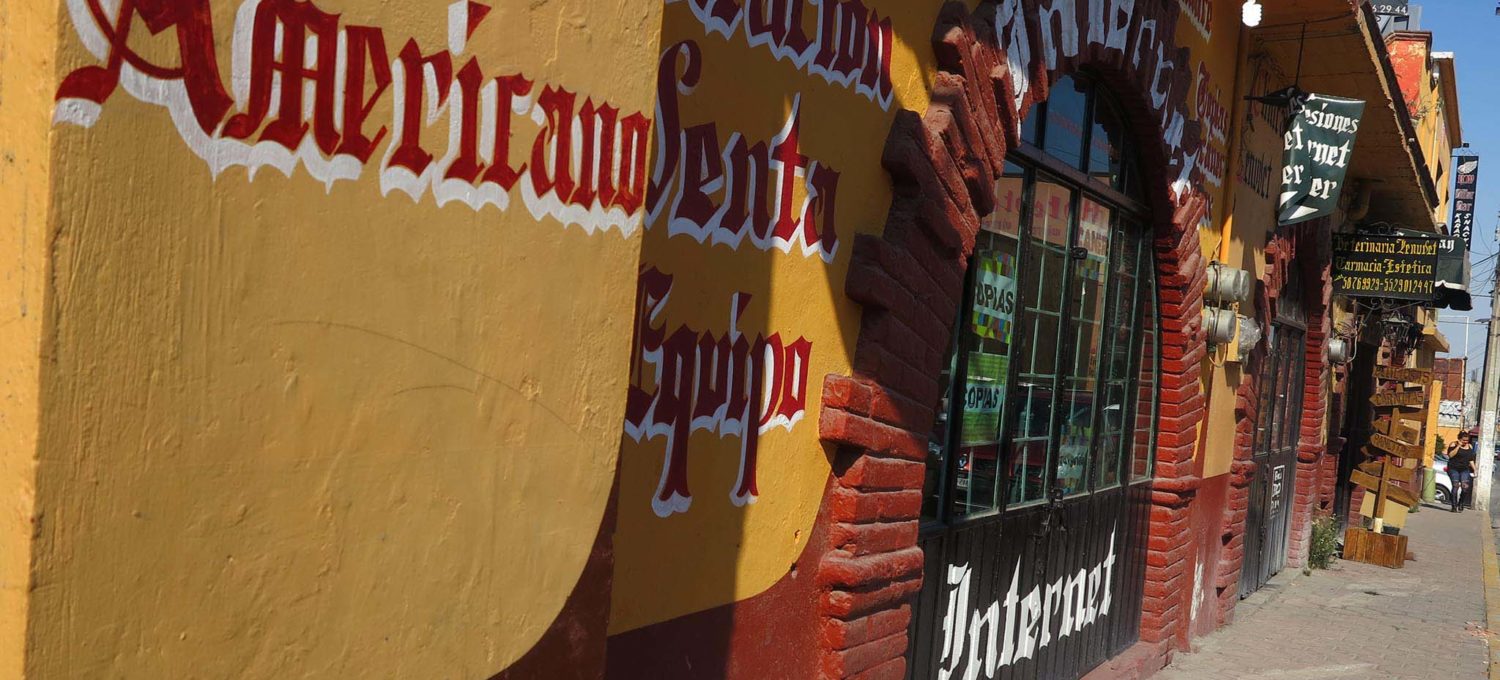I wandered through the village of Tepotzotlán crisscrossed by meandering rural roads with large, seemingly prosperous houses and shops next to them.
As I turned down one later I saw a shop-sign offering to paint publicity. The rotulistas or publicity painters stamp an indelible character on the commercial façade of the edge of the city. Their work is everywhere, with its fantasy-lettering and iconic images.
Letters sometimes say more about the future of the edge than the building they are on. Not what the letters say but their shapes project the city’s future, decaying government signage, glossy corporate logos, scrawled graffiti and the idiosyncratic, neat, colorful work of the hand-painters.
I particularly enjoyed the work of hand painters on Alcoholics Anonymous meeting places, where scrawling letters would radiate hope and despair. I had come to associate the neatness of the hand painters with a rural, small town, atmosphere. I imagined the slow walk of the village notables among the small shops and found something comforting in the conservative, hand-made idiosyncrasy of each commercial facade.
Tepotzotlán, with its leafy streets and colonial buildings all neatly scrawled in red and black, seemed to be an apt example, though the most interesting street signs I found were in Valle de Chalco, where they snaked over the walls in an infinity of styles and shapes. In Tepotzotlán the letters were a neat scrawl reminiscent of colonial Mexico.
I looked inside the shop and saw a man in his thirties sitting by a work-desk with a large white folder on it.
I entered and told him of my interest in typography. He said more and more people were using computer-designed publicity and billboards in front of their businesses but that there was still a good market for hand-painted publicity. Hand painted letters have the advantage of making optimal use of the available space while typical printed shop-front publicity is rectangular in shape.

He had started in this business as an apprentice to his uncle. The fonts they either copied or occasionally invented themselves as the need arose. He spent a lot of time painting over graffiti. He said sometimes he respected the invention of graffiti artists but that this was rare occurrence. It was a lot to ask him to respect their work when they didn’t respect his.
Another rotulista in Ciudad Nezahualcóyotl later told me that sometimes he was asked to paint murals in places where there was a lot of graffiti. It was not the quality of the work which spared the walls graffiti but what was depicted. Some figures were too widely respected to be covered in graffiti, such as Pancho Villa and the Virgin de Guadalupe. Nobody would write their tag over the flashing eyes of Emiliano Zapata.
Neighborhoods take shape under the hand of the designers of commercial signage. They know which shops are opening and where. They know the commercial tastes of the people.
The man told me that the uniformity of the letters in Tepotzotlán was because of a municipal program to create a uniform, urban image attractive to tourists reminiscent of a quaint provincial town. These were not traditional letters. Rather a letter-type from other regions had been brought to Tepotzotlán. It was fake antiquity, not that anybody would notice among these cobbled streets and leafy lanes.
He said that following a script was a little bit more boring, but that it did help the village with the colonial convent to attract more tourists. In the end the client determines the product. The rotulista paints what the client wants.
And Tepotzotlán wanted to be a rural colonial treasure under a hill to the north of the city, not another suburb swallowed in concrete. The letters on the wall said so.
